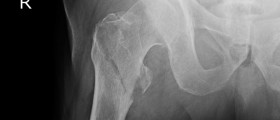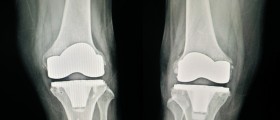Open Fractures and Types
Open fractures are those that have a breach of the skin continuity, and there is also a possibility of communication of fractured elements with the outer environment. Open fractures are the most dangerous of all fractures because they are almost always followed by some complications such as infections, the inability of fracture to heal properly, the inability of using fractured extremities after recovery, and increased mortality because of bleeding since big blood vessels can be damaged in this type of fracture.
To determine the best method of therapy and for predicting the outcome of the condition, there are three types of open fractures.

The first type - fracture happened due to the force of small intensity, skin laceration is not longer than 1 inch, the wound is relatively clean, and the bone fragment is barely visible from the outside. Soft tissues are not damaged much, if at all.
Second type - medium force causes this type of open fracture. Minor dislocation of the broken fragments is present and those fragments can be seen. Soft tissue is damaged to a certain point, and contusion also happens.
Third type - fracture is caused by maximum force. This is dislocated type of fracture, and bone fragments might be completely detached. Skin loss is present and extensive, muscles are severely damaged, and tendons and other tissues are also affected. The most difficult recovery happens in this type of fracture. Antibiotics are needed, while the wound has to be tendered by a surgeon.
Possible Complications of Open Fractures
Complications usually happen more in open than in closed fractures. The most common problem that might emerge is an infection, which happens because part of the skin is gone and the wound is open to the outer environment, and all sorts of bacteria might affect it. This is especially emphasized if a wound was in contact with dirt or some other material, which usually happens. The surgery must be done as fast as possible, to close the wound and prevent further spread of infections.
Improper healing and recovery is manifested as slow healing, incomplete accretion (called pseudoarthrosis), or the accretion that was simply wrong, leaving a deformity. Incomplete accretion can happen because of several reasons, as a consequence of osteoporosis and infection. This leaves a patient with an extremity with disabled function, which makes walking, for example, very difficult (if the leg was fractured).
Wrong accretion results in a deformity that ends in a complete or partial dysfunction of the recovered bone. Open fracture complications, if left untreated or if treated poorly, can severely damage the patient’s use of the broken extremity, or even the life of the patient, so those fractures have to be immediately and properly treated.
- Open Fractures have an annual incidence of 30.7 per 10,000 in the UK. Tibial open fractures have the highest incidence of 3.4 per 100,000. High energy trauma is the leading mechanism of injury for open fractures, with over 50% resulting from road traffic accidents or falls from significant height. The majority of patients with high-energy open fractures are young males and often have concomitant injuries with significant soft tissue trauma adding to the injury’s complexity.
- The BOAST-4 guidelines include all patients with open fractures of long bones, hindfoot, or midfoot (excluding hand, wrist, forefoot, or digit) and are distilled from the National Institute of Care Excellence (NICE) comprehensive guidelines for complex fractures. The guideline aims to prevent infection and restore function by providing recommendations to clinicians on antibiotics, debridement, fixation and definitive cover, the right team to manage the injury, and decisions to amputate.
- Antibiotic delivery in the prehospital setting, the type and duration of antimicrobial therapy, timing for the conversion from external to internal fixation, and the differentiation between adult and paediatric open fractures were among the many pertinent topics critiqued, and evidence-based improvements suggested.

















Your thoughts on this
Loading...